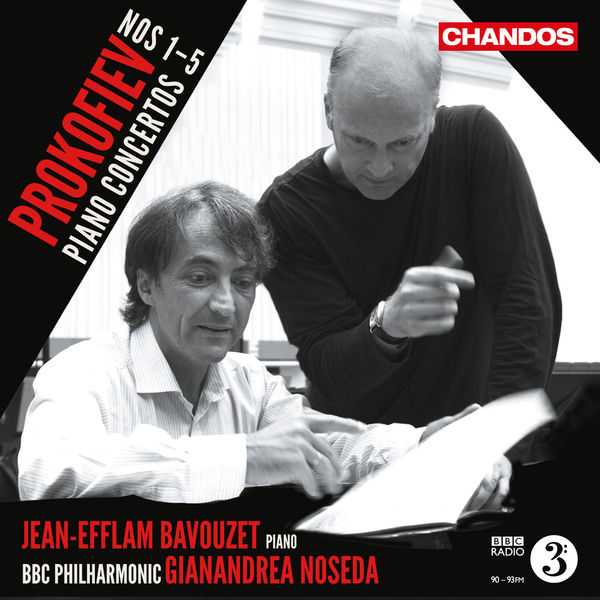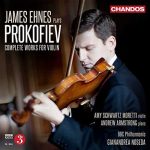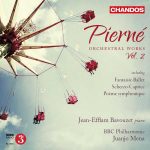

Composer: Sergey Prokofiev
Performer: Jean-Efflam Bavouzet
Orchestra: BBC Philharmonic Orchestra
Conductor: Gianandrea Noseda
Number of Discs: 2
Format: FLAC (tracks)
Label: Chandos
Catalogue: CHAN10802(2)
Release: 2014
Size: 2.07 GB
Recovery: +3%
Scan: yes
CD 01
Piano Concerto no. 1, Op. 10
01. I. Allegro brioso – Poco più mosso
02. II. Meno mosso – Più mosso
03. III. Andante assai – Tranquillo, decrescendo e
04. IV. Allegro scherzando – Pochissimo meno mosso
Piano Concerto No. 2, Op. 16
05. I. Andantino – Allegretto – Poco meno mosso
06. II. Scherzo. Vivace
07. III. Intermezzo. Allegro moderato
08. IV. Finale. Allegro tempestoso – Meno mosso
Piano Concerto No. 3, Op. 26
09. I. Andante – Allegro – Più mosso – Andante
10. II. Tema. Andantino
11. III. Allegro ma non tropo – Poco più mosso – Meno mosso
CD 02
Piano Concerto No. 4, Op. 53
01. I. Vivace
02. II. Andante
03. III. Moderato – Allegro moderato – Meno mosso
04. IV. Vivace
Piano Concerto No. 5, Op. 55
05. I. Allegro con brio – Più mosso – Meno mosso
06. II. Moderato ben accentuato – Più mosso
07. III. Toccata. Allegro con fuoco
08. IV. Larghetto – Più mosso – Poco meno mosso
09. V. Vivo – Appena più mosso – Più mosso
Exclusive Chandos artist Jean-Efflam Bavouzet performs all five of Prokofiev’s formidable piano concertos in partnership with Gianandrea Noseda conducting the BBC Philharmonic.
Bavouzet’s flair for powerful twentieth-century repertoire was made clear in his recording of Bartok’s Piano Concertos, described by The Telegraph as ‘vibrant in colour, vital in rhythm and detail and viscerally exciting in impact.’ Prokofiev wrote these works between 1911 and 1932, mostly as performing vehicles for himself during his most active period as a pianist of astonishing gifts. The First Concerto is for the most part a youthful jeu d’esprit, full of rhythmical energy, but its brief slow movement is surprisingly tragic. The Second Concerto poses some of the most significant technical challenges in the entire piano repertoire, its vivid and athletic keyboard writing pushing the boundaries of what is playable. The Third Concerto in C major, a bright and breezy vehicle for Prokofiev to showcase his talents as a performer, is today his most popular piano concerto. Numbers 4 and 5 are the least well known, having been written at a time when Prokofiev was pushing his musical language to new extremes. However, both concertos contain slow movements that are full of wistful lyricism, foreshadowing the melodic impulse revealed in later works, such as Romeo and Juliet.



